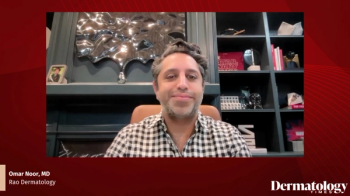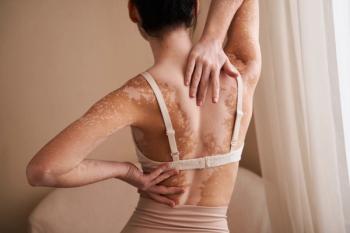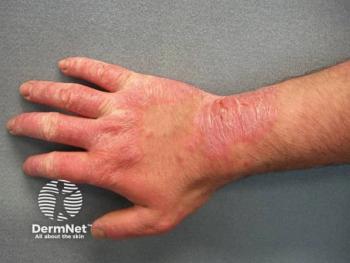
New Survey Confirms Acne Patients Have More Trust in Clinicians than Social Media Influencers
Key Takeaways
- Patients with acne trust board-certified dermatologists significantly more than social media influencers for treatment advice.
- The study found that 81% of participants had "definite trust" in their dermatologists, compared to only 2% for influencers.
Even with the recent rise of social media guidance, patients still trust dermatologists over social media influencers for acne treatment.
A new study analyzed the patient perception of dermatologists and social media influencers, specifically in those with varying levels of acne severity.1 Even with the rise of social media as a source for dermatological information, patients still trust their board-certified clinicians over influencers.
In this cross-sectional study, 100 participants with acne were given a 30-question survey titled "Examination of Acne Patients’ Trust Levels in Social Media Influencers and Dermatologists,” which included both multiple-choice and open-ended questions along with a rating system. Scores of 4 or 5 were defined as “definite trust” and “high satisfaction.” Conversely, scores between 1 and 3 indicated “low trust” and “low satisfaction.”
Patients were treated at the outpatient dermatology clinic of Ankara Training and Research Hospital in Ankara, Turkey. About 75% were women and 35% were men. All were between the ages of 18 and 45, with a mean age of 20.93. Investigators collected data on patient demographics, disease severity, satisfaction of acne treatments, social media usage, frequency of dermatology visits, and overall trust in their sources relating to acne information. About half of the participants had moderate acne, with 16% having mild disease, 29% having severe disease, and 4% having very severe disease.
Of the 95% of surveyors who used social media for information, 67% got their information on acne from social media, especially Instagram (63%). YouTube (23%), TikTok (20%), and Facebook (12%) were also utilized. The most common trend was using social media to receive recommendations on products and cosmetics (36%). Dietary recommendations were the least trending topic. Over half of patients said that they always use products that are recommended by dermatologists. Only 23% of the surveyors experienced improved acne, thanks to advice from social media only. Adverse effects, including erythema and worsened acne, were reported in 7% of participants.
About 81% of patients highly trusted their personal dermatologist and indicated their confidence level as “definite trust,” according to the survey. This same level of trust in influencers was a reported rate of just 2%. If the participants found contradictory information between what their clinician tells them versus what they see on social media, 97% would turn to their dermatologist as their first choice in treatment recommendations, indicating a higher level of trust. Interestingly, patients who received acne advice from both clinicians and dermatologists reported greater disease improvement than those who only sought out licensed dermatological care (p: 0.033; p <0.05).
When assessing their confidence in dermatologists, education and credentials were most important to patients. When assessing their confidence in social media influencers, the use of scientific evidence was most vital. Demographics, such as patient education, had no statistically significant impact on the amount of confidence in clinicians versus social media influencers. However, males did tend to seek solutions on social media before later visiting a dermatologist, while females consulted clinicians before beginning to use products recommended by influencers. This aligns with what was reported in previous studies.2
“This may be explained by women’s greater health awareness and more active use of social media,” the authors inferred. “Additionally, the societal emphasis on women’s physical appearance, the cosmetics industry’s focus on female consumers, and women’s greater willingness to share their skin concerns may increase their exposure to acne-related content.”
The study authors recommend that expert dermatologists who feel comfortable posting on social media should do so to keep their patients informed and further build that professional trust. On widely used platforms like TikTok and Instagram, clinicians should increase the dissemination of accurate and reliable information, as most of the patients in this study thought it could be beneficial to see more content from dermatologists. Future studies can support these conclusions and should include a greater number of patients, especially younger ones between the ages of 12 and 18, who actively use social media.
References
1. Bal Z, Karaosmanoglu N, Temel B, et al. Trust in Dermatologists Versus Social Media Influencers Among Acne Patients. Cureus. 2025. 17(5): e83930. DOI 10.7759/cureus.83930.
2. Gantenbein L, Navarini AA, Maul LV, Brandt O, Mueller SM: Internet and social media use in dermatology patients: search behavior and impact on patient-physician relationship. Dermatol Ther. 2020, 33:e14098. 10.1111/dth.14098
Newsletter
Like what you’re reading? Subscribe to Dermatology Times for weekly updates on therapies, innovations, and real-world practice tips.



















